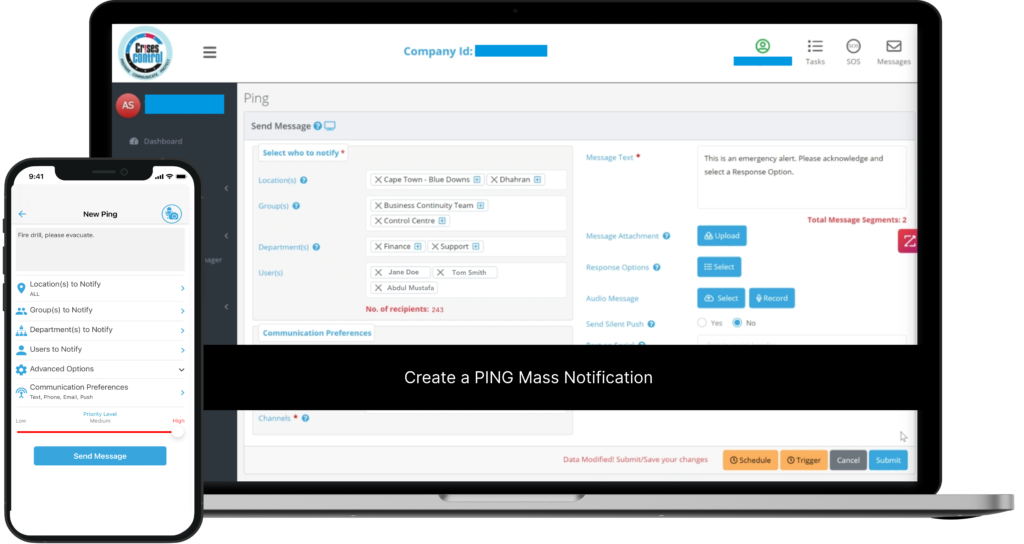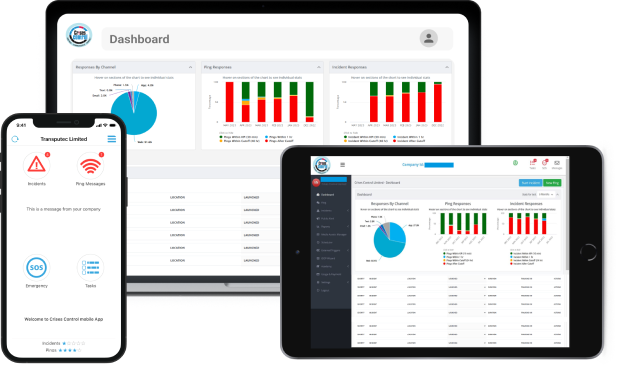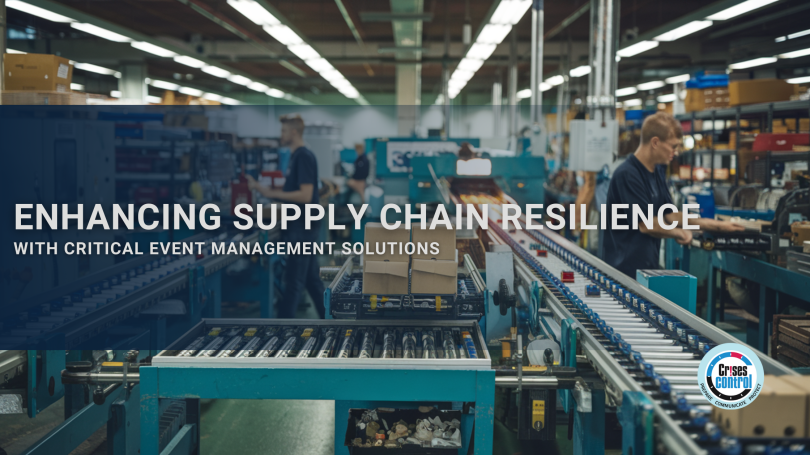Written by Ikram Tassi | Marketing
Supply chains are the backbone of successful businesses. Ensuring that goods and services reach customers efficiently has never been more critical. However, supply chains face a range of challenges—ranging from natural disasters to cyberattacks—that can disrupt operations and impact business continuity. Overcoming these challenges requires innovative approaches, and this is where Critical Event Management (CEM) solutions come into play.
A well-designed Critical Event Management platform empowers businesses to anticipate risks, streamline communications, and respond swiftly to disruptions. In this blog, we’ll explore how CEM tools can fortify supply chain resilience and demonstrate how Crises Control offers tailored solutions for these needs.
What is Supply Chain Resilience?
Supply chain resilience is the ability of a supply chain to anticipate, prepare for, adapt to, and recover from disruptions while maintaining continuous operations. Building resilience safeguards revenue, reputation, and customer trust—key factors for long-term success.
Core elements of supply chain resilience include:
- Risk Identification: Spotting vulnerabilities before they evolve into significant issues.
- Flexibility: Adjusting to changes quickly and effectively.
- Redundancy: Developing alternative options for critical resources or routes.
- Clear Communication: Keeping all stakeholders informed during a crisis to ensure coordinated action.
Key Risks Impacting Supply Chains
Modern supply chains are exposed to numerous threats, many of which are external and unpredictable. Common examples include:
- Natural Disasters: Events like hurricanes, floods, and earthquakes can damage infrastructure and disrupt transportation.
- Cybersecurity Threats: Cyberattacks on logistics systems can halt operations, leading to delays and revenue losses.
- Geopolitical Events: Trade restrictions, political instability, or conflicts can disrupt supply chains and necessitate rerouting.
- Health Crises: The COVID-19 pandemic demonstrated how global health issues can significantly impact supply chains.
- Supplier Failures: Unexpected disruptions at a supplier’s end can have ripple effects across the supply chain.
Each of these scenarios underscores the importance of adopting a proactive and integrated approach to manage critical events effectively.
The Role of Critical Event Management Solutions in Supply Chain Resilience
Critical Event Management tools help organisations prepare for, respond to, and recover from disruptions. Here are four ways these tools bolster supply chain resilience:
1. Proactive Risk Monitoring
A reliable CEM platform integrates real-time data sources—such as weather services, geopolitical updates, and IoT sensors—to detect potential threats. Predictive analytics then enable businesses to:
- Identify risks early.
- Develop contingency plans, such as alternative shipping routes.
- Minimise potential losses and delays.
2. Streamlined Incident Management
Disorganised responses during critical events can exacerbate problems. CEM platforms centralise incident management, allowing teams to:
- Coordinate actions effectively across departments.
- Access predefined workflows tailored for various disruptions.
- Monitor real-time progress and assign responsibilities.
3. Powerful Mass Notification Systems
Clear and timely communication is critical during disruptions. A Mass Notification System ensures that:
- Alerts reach the right stakeholders via multiple channels, such as SMS, email, and app notifications.
- Messages are actionable and specific, reducing confusion.
- Teams, suppliers, and partners remain aligned and informed.
4. Post-Event Analysis
Building resilience isn’t just about responding to events; it’s also about learning from them. CEM platforms provide robust analytics tools to:
- Assess response effectiveness.
- Identify recurring risks and bottlenecks.
- Enhance future preparedness by refining workflows and strategies.
Interested in our Ping Mass Communication Software?
Efficiently alert everyone in seconds at scale with our Mass Communication Software – PING, get the message out fast and ensure rapid response and recovery.

How Crises Control Empowers Supply Chain Resilience
Crises Control’s Critical Event Management platform offers a comprehensive suite of tools to address modern supply chain challenges. Here’s how our platform helps businesses mitigate risks and recover quickly:
1. Real-Time Threat Monitoring
Crises Control provides instant access to real-time data, empowering organisations to detect risks as they emerge. With our predictive analytics and rapid alerting, you can act decisively to minimise disruptions.
2. Customisable Workflows
Supply chains have unique requirements, and Crises Control’s flexible platform adapts to meet them. Create workflows for specific scenarios—whether it’s a cyberattack or a weather-related delay—and ensure your team is always prepared.
3. Advanced Mass Notification System
Our Mass Notification System ensures seamless communication, allowing you to:
- Send urgent alerts to global teams instantly.
- Track message delivery and response rates.
- Enable two-way communication for feedback and updates.
4. Cloud-Based Accessibility
With Crises Control’s cloud-based system, you can manage incidents and track responses from anywhere. This ensures uninterrupted access to critical information during crises, no matter where your team is located.
5. Data-Driven Insights
Our platform’s analytics tools provide actionable insights post-incident, enabling you to:
- Pinpoint areas for improvement.
- Identify recurring challenges.
- Strengthen your overall resilience strategy with data-driven decisions.
The Benefits of Adopting Critical Event Management Solutions
Using a robust CEM platform like Crises Control delivers tangible benefits, including:
- Reduced Downtime: Proactive measures ensure minimal disruption to operations.
- Improved Stakeholder Trust: Transparent communication builds confidence among customers, partners, and employees.
- Cost Savings: Quick responses and preventive measures reduce financial losses associated with disruptions.
- Regulatory Compliance: Stay aligned with industry standards and legal requirements.
- Competitive Edge: Resilient supply chains offer a distinct advantage in an increasingly unpredictable market.
Take the Next Step Towards Resilience with Crises Control
Supply chain disruptions are inevitable, but their impact doesn’t have to be. By integrating Critical Event Management solutions into your operations, you can safeguard your business, protect your bottom line, and maintain customer trust.
At Crises Control, we understand the unique challenges of modern supply chains. Our cutting-edge platform provides real-time monitoring, customisable workflows, advanced mass notification capabilities, and data-driven insights to keep your business running smoothly.
Don’t let disruptions derail your success. Contact us today to schedule a free demo and discover how Crises Control can empower your supply chain to thrive in the face of any challenge.
Request a FREE Demo

